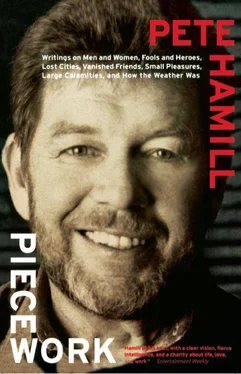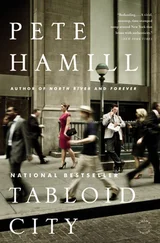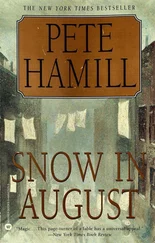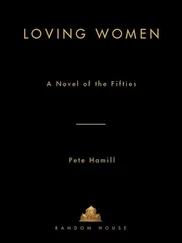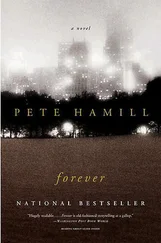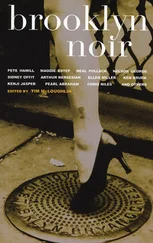Pete Hamill - Piecework
Здесь есть возможность читать онлайн «Pete Hamill - Piecework» весь текст электронной книги совершенно бесплатно (целиком полную версию без сокращений). В некоторых случаях можно слушать аудио, скачать через торрент в формате fb2 и присутствует краткое содержание. Год выпуска: 2009, ISBN: 2009, Издательство: Little, Brown and Company, Жанр: Современная проза, Публицистика, на английском языке. Описание произведения, (предисловие) а так же отзывы посетителей доступны на портале библиотеки ЛибКат.
- Название:Piecework
- Автор:
- Издательство:Little, Brown and Company
- Жанр:
- Год:2009
- ISBN:9780316082952
- Рейтинг книги:5 / 5. Голосов: 1
-
Избранное:Добавить в избранное
- Отзывы:
-
Ваша оценка:
- 100
- 1
- 2
- 3
- 4
- 5
Piecework: краткое содержание, описание и аннотация
Предлагаем к чтению аннотацию, описание, краткое содержание или предисловие (зависит от того, что написал сам автор книги «Piecework»). Если вы не нашли необходимую информацию о книге — напишите в комментариях, мы постараемся отыскать её.
offers sharp commentary on diverse subjects, such as American immigration policy toward Mexico, Mike Tyson, television, crack, Northern Ireland and Octavio Paz.
Piecework — читать онлайн бесплатно полную книгу (весь текст) целиком
Ниже представлен текст книги, разбитый по страницам. Система сохранения места последней прочитанной страницы, позволяет с удобством читать онлайн бесплатно книгу «Piecework», без необходимости каждый раз заново искать на чём Вы остановились. Поставьте закладку, и сможете в любой момент перейти на страницу, на которой закончили чтение.
Интервал:
Закладка:
“Too long a sacrifice,” wrote W. B. Yeats, “can make a stone of the heart.” And moving into Belfast in this desperate week, you saw that too long a sacrifice had already taken place: too many years of bigotry, too many years of being offered humiliation or exile as the sole choices of a life, and finally too much blood.
Instead you saw the skeletons of transmitting towers rusting in the countryside; suburban houses reduced to rubble; great gaping holes in the once tight-packed walls of the downtown avenues; plywood and tin covering a thousand shattered windows. Belfast was a town at war, its heart turning to stone.
And as we walked into customs, at Aldergrove Airport, for a long and tedious search, everyone there knew that the crunch had come. The day before, 13 Irishmen had been returned to the Irish earth, while 20,000 people stood in lashing rain and sleet outside St. Mary’s Church in Derry. Inside the church, the bishops and lord mayors and aldermen sat in silken mourning beside the families of the dead. But Ireland flowed up the hills of the Catholic ghetto called the Creggan, made up of men with cloth caps, women with worn faces, the working people of Derry, scattered under umbrellas holding off the rain. Bernadette Devlin stood outside in the rain, with Ireland.
That ceremony was at the heart of the crunch. Those 13 had been shot down on Sunday Bloody Sunday, and the Irish tragedy hurtled forward in a series of jump cuts: Bernadette Devlin slamming Reginald Maudling in the House of Commons; the British Home Stores in Belfast being blown apart at dawn; the Republic withdrawing its ambassador from London and sending Foreign Secretary Hillery to New York; and then 30,000 people in Dublin burning out the British Embassy. After Sunday there was more happening in Ireland than the IRA.
In the afternoon we went to the Lombard Room of the Royal Avenue Hotel, where officers of the Northern Ireland Civil Rights Assn. announced to a packed smokey press conference that Sunday’s march in the border town of Newry would go on as scheduled. The British reporters practically interrogated the civil rights people as if simply showing up in a public place in Northern Ireland was a guarantee of violence. But in Derry last Sunday the only dead were Irishmen, none of whom were armed. If this Sunday’s march turned violent it would be the British Army that turned it violent, not Irishmen asking for civil rights.
At nightfall, a dense brown fog mixed with the smoke of burning buildings seeped through the city. We started to move towards the Catholic ghetto in the Lower Falls Road. British soldiers edged their way through the fog, their blackened faces looking as blank as the nose of a machine gun. In the distance, we heard a burst of automatic weapons fire, muffled shouts, and men running in the fog. There was no edge to the buildings, no conventional geography in those darkened streets.
We were put up against a wall and searched. There was the tap-tap-tap of a rifle again. Up ahead, a mangled pile of vehicles burned an orange hole in the brown fog. The British were trying to clear the barricades, which had been built to prevent them from having easy access to the area, and from the Divis Street flats, Irishmen with guns were shooting back. A knot of young people, grim and almost insanely courageous, heaved rocks and curses at the Saracen light tanks.
“Bastards, murderin’ bastards,” someone shouted from the darkness. There were more voices in the dark, running feet, smashing glass, isolated shots, and still the fog moved down the Falls Road. The British laid down a barrage of 4-inch-long rubber bullets from grenade launchers and the young people scattered. More shots came from the Divis Street flats. Two rounds slammed into the plywood covering of the shuttered bar where I was standing. And then suddenly it was quiet. The fog covered everything, and the British soldiers started to withdraw.
It was Friday morning and the night belonged to the IRA.
III.
BELFAST
You see them shopping along the Shankill Road in the dull grainy Northern afternoons: tidy women pushing baby carriages, men in wool suits, children playing with plastic guns. The side streets are bristling with Union Jacks and red, white and blue bunting, and you can see the gray iron wall of the “peace line” at the end of some of the streets, and the spray-can graffiti of the Protestant ghetto: “IRA Beware” and “No Pope Here” and “Home Rule Is Rome Rule” and “No Surrender.”
These are the Protestants of Northern Ireland, and seldom has a majority ever acted more like a minority; these are people who inhabit a fortress, their minds in a state of siege.
“We’re British,” a man told me one afternoon, standing angrily on a corner of Sandy Row, with the stunted slum houses of the Protestant working class ghetto spread out behind him. “We’ll remain British, even if Heath sells us out, even if Faulkner sells us out.”
The man was a welder in the Harland and Woolf shipyards (in which there are only 100 Catholics in a 9000-man work force). He spoke in the hard, heavy accents of the Belfast working class; his tone, with all its cargo of intractable resentment and suspicion of betrayal, was unmistakably Irish. In London, he would be labeled “Paddy” along with the rest of the Irish. But here in Belfast, this city strangling on the stale meal of history, he was insisting that he was British; it was as if a can of tomato soup, through some act of pop alchemy, could describe itself as a ham sandwich.
“The basic confusion here,” a British reporter said to me one night, “is that they’ve got their notions of lunatic patriotism mixed up with their notions of lunatic religion. They’re sick with religion.”
The phrase was apt. If Belfast is not precisely sick with organized religion, it is certainly sick with churches (the buildings, not the faiths). The churches are everywhere: 55 for the Church of Ireland (Anglican), 65 for the Presbyterians, 35 for the Methodists, 4 for the Reformed Presbyterians, 17 for the Baptists, 9 for the Congregationalists, 6 for the Evangelical Presbyterians, 24 for the Roman Catholics, 4 for the Non-Subscribing Presbyterians, 8 for the Elem Pentecostals, 1 for the Christian Scientists, 13 for the Salvation Army, 2 for the Society of Friends, 2 for the Moravians, 5 for the Apostolics, 1 for the Plymouth Brethren, 2 for the Emanual Mission, 5 for the Free Presbyterians, 3 for the Church of Latter Day Saints, 1 for the Seventh Day Adventists, plus 1 Railway Mission, 1 Coalmen’s Mission, and a number of smaller gospel halls. There is one church for every 1000 adults. And in the 1961 census, only 64 people in all of Northern Ireland (pop: 1,500,000) described themselves as atheists.
The result of this overdose of organized Christianity has been destruction, bigotry, fear, hatred, paranoia and death. Walking the streets of this town, where the smoke from the bombed-out buildings hangs in the air for days while church spires stab at the skies like the spears of pagan armies, it is difficult to understand what Christianity thinks it is doing here.
There are, of course, thousands of Protestants who are neither bigots nor Bible-thumping fundamentalist lunatics, and a number of them have finally begun to talk about the inevitability of a 32-county Ireland. But down in those Shankill churches, many of the less educated are continuing to lock themselves into the prison of dogma.
The phrases have the high keening tenor of apocalypse about them: “Roman Catholicism is the Anti-Christ, Greatest of all Harlots, and Cause of all Our Present Discontents. Bernadette Devlin is the Pope’s Whore.”
The mixture of lurid sexual metaphor with statements of moral purity laces the language of the Protestant ghettoes; the language is accompanied by an almost touchingly naive belief in the now-forgotten slogans of the past. Consider the words of one Protestant battle hymn (“Ye Loyalists of Ireland”):
Читать дальшеИнтервал:
Закладка:
Похожие книги на «Piecework»
Представляем Вашему вниманию похожие книги на «Piecework» списком для выбора. Мы отобрали схожую по названию и смыслу литературу в надежде предоставить читателям больше вариантов отыскать новые, интересные, ещё непрочитанные произведения.
Обсуждение, отзывы о книге «Piecework» и просто собственные мнения читателей. Оставьте ваши комментарии, напишите, что Вы думаете о произведении, его смысле или главных героях. Укажите что конкретно понравилось, а что нет, и почему Вы так считаете.
